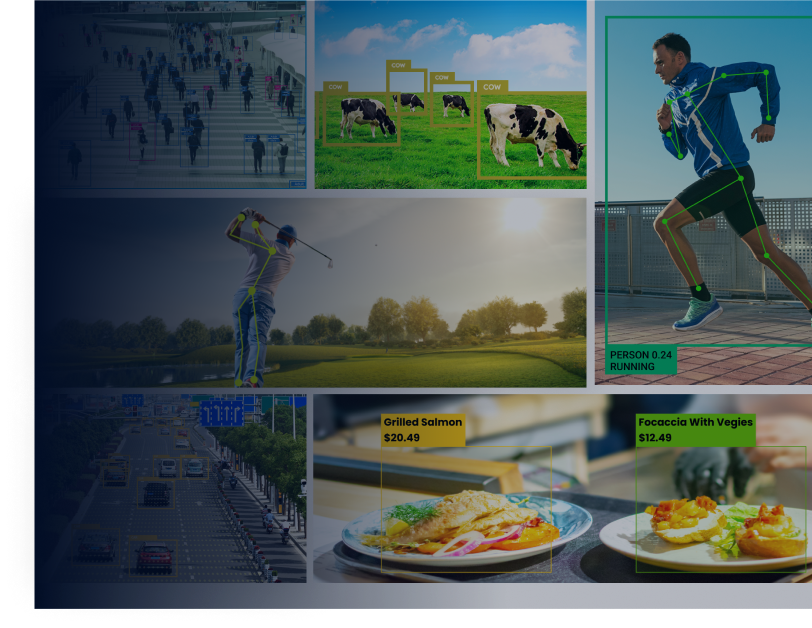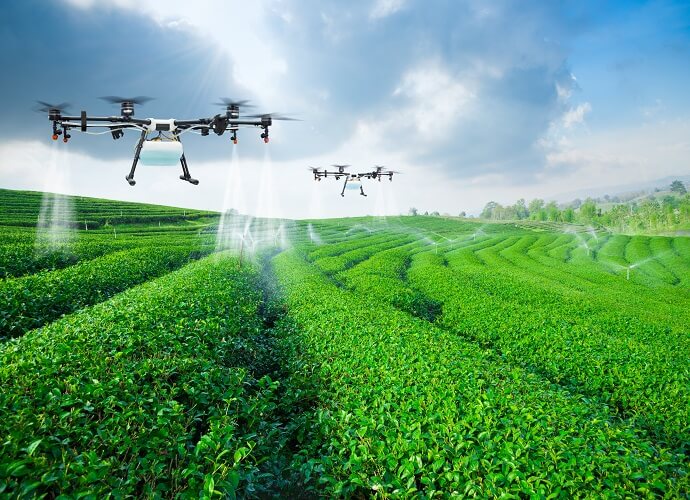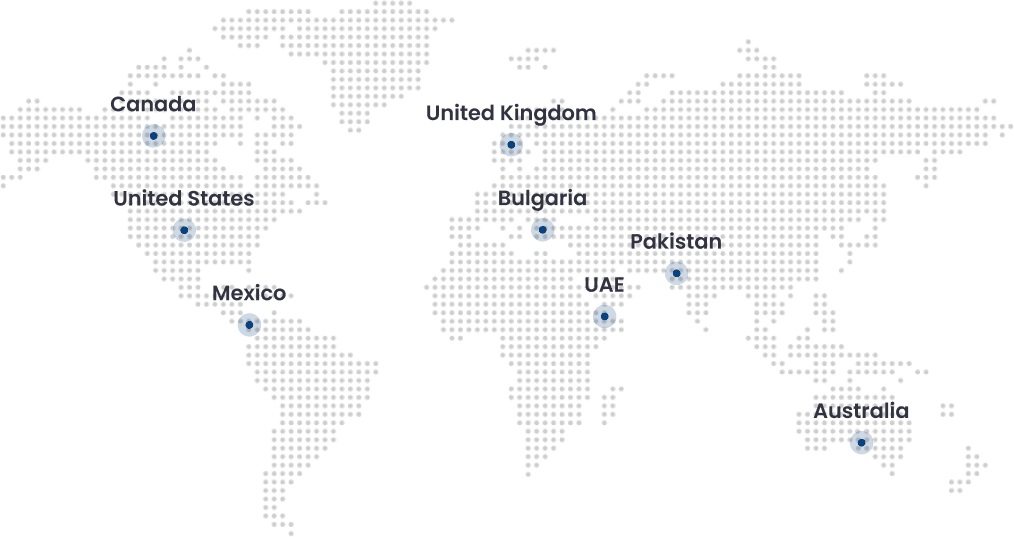Drones are now increasing in almost every industry. However, the use of drone technology in agriculture transformed farming practices to a greater aspect. Their ability to gather data and survey larger areas of fields from the sky is helping farmers manage their crops and livestock. According to the report, the global agricultural drone market will reach over $3.2 billion by 2025. Because of the benefits drones offer, like improved crop health monitoring and increased precision in resource application. It also provides real-time information and detailed aerial views, which makes it easier for farmers to make decisions, ultimately enhancing productivity and sustainability on the farm.
In this blog, you will get a detailed overview of how drones are used in agriculture and their transformative impact on the industry. We’ll explore drone applications and their benefits in agriculture.

Key Applications of Drones in Agriculture
Drones are becoming great tools for farmers, making their work easier and more efficient. Additionally, the use of drones in precision agriculture has been shown to increase crop yields by up to 20% and reduce pesticide use by 30%. This shows how quickly this technology is being adopted because of the many applications it offers. Let’s look at some of its uses.
1- Crop Monitoring and Health Assessment
Using drones in agriculture has elevated crop monitoring by providing farmers with a bird-eye view of their crops. Drones are equipped with advanced sensors and high-resolution cameras that capture every detail of crops, revealing potential issues invisible to humans.
The images that these drones take are used to further analyze signs of stress, nutrient deficiencies, and even early signs of pest or disease outbreaks. Because of their speed and efficiency, drones eliminate the need for time-consuming manual inspections, saving farmers valuable time and resources.
They also cover larger areas in a short time, and the data that drones capture empowers farmers to implement corrective measures that ensure optimal crop health and productivity.
2- Field Mapping and Surveying
Because drones are equipped with the best cameras and also capture outstanding images of fields, they are used to create detailed and precise field maps that significantly aid in planning and management.
These maps are then used for various purposes, such as calculating field area, measuring crop health variability, and planning irrigation systems.
Further, by flying over fields, drones collect data from multiple angles that generate 3D terrain models of agricultural land.
This model is valuable as it gives comprehensive data for designing efficient irrigation and drainage systems, minimizing water usage, and mitigating erosion risks.
3- Irrigation Management
Regarding irrigation management, water is a precious resource in agriculture for healthy crops and optimal yields. Where drones are being used to monitor soil moisture levels across fields with great accuracy.
The use of drones in agriculture is vast as they are equipped with multispectral sensors. This helps them gather data on soil moisture levels and water stress in plants.
The captured information is then used to generate maps showing areas with high or low moisture levels, which enable farmers to implement precision irrigation techniques such as drip irrigation, saving both water and costs.
This targeted approach ensures water is used efficiently, reducing waste and promoting better crop growth. Efficient water management is essential for sustainable farming, especially in drought-prone areas.
4- Precision Spraying
we are well aware that the traditional methods of applying pesticides, herbicides, and fertilizers often involve blanket spraying across entire fields.
But drones, which have also become a valuable technology in farming practices, revolutionize the application of fertilizers, pesticides, and herbicides by offering pinpoint accuracy.
Drones come with specialized sprayers and sensors that deliver pesticides, herbicides, and fertilizers directly to targeted areas.
This minimizes waste and reduces the risk of overspray reaching non-target areas or waterways. Moreover, it also reduces farmers’ exposure to harmful chemicals and improves the overall health of crops.
5- Planting and Seeding
Automated drone systems excel in planting seeds with high precision. These drones ensure uniform seed distribution, which reduces waste and promotes even crop growth.
This approach allows planting in areas that would otherwise be difficult or impossible to cultivate.
Additionally, drones also have the potential to grow more precisely and efficiently on slopes or hard-to-reach areas that are challenging for traditional machinery.
Farmers used to work with heavy machinery to compact the soil, but now they use drones that deliver a lighter touch, minimizing soil compaction and promoting healthy root development.
6- Livestock Monitoring
Drones help track animal movement and health by providing real-time data on livestock’s location and condition.
This capability allows for more effective management of grazing patterns and pasture conditions, leading to healthier animals and improved resource use.
For instance, drones equipped with thermal imaging can detect signs of illness early, allowing for prompt and targeted interventions.
Such advanced monitoring ensures that livestock receives optimal care, improving overall farm productivity and animal welfare.
Benefits of Using Drones in Agriculture
The adoption of drones in agriculture brings a multitude of benefits that significantly enhance farming practices. This section will explain the main ways drones help modern farming and how they shape its future.
1- Efficiency and Time-Saving
Drones can significantly reduce the time spent monitoring and managing crops. Traditional techniques of surveying large fields might take hours or even days, whereas drones operate on a fraction of the time. This efficiency allows farmers to focus on other essential farm chores, thus increasing overall productivity.
2- Precision Farming
Drones enable highly accurate farming operations by gathering detailed data and monitoring crops in real-time. They allow for the targeted use of resources such as water, fertilizer, and pesticides, which reduces waste while promoting optimal crop growth and health. This precision leads to healthier crops and more efficient farming practices.
3- Cost-Effectiveness
Incorporating drones into farming operations leads to cost savings. Drones monitor and distribute resources, reducing manual labor and resource usage. This lowers operational expenses while maintaining high crop yields and quality. The initial investment in drone technology is often offset by long-term savings and increased efficiency.
4- Sustainability
Drones contribute to sustainable farming by promoting efficient resource management. Precise monitoring and targeted interventions help decrease chemical runoff and water consumption. This not only benefits the environment but also fosters the long-term health and viability of farms.
5- Improved Data Collection
Drones provide high-resolution imagery and data that allow for better decision-making. Farmers can analyze this data to detect issues such as pest infestations, disease outbreaks, or nutrient deficiencies early, leading to timely and effective interventions. This advanced data collection enhances overall farm management and productivity.
6- Enhanced Crop Health
By closely monitoring crops, drones help farmers quickly identify and address problems before they escalate. This proactive approach not only improves crop health but also boosts yield quality and quantity. Early detection and intervention are key to maintaining robust and productive crops.
7-Better Field Management
Drones offer a comprehensive overview of fields, enabling better planning and management strategies. Detailed field maps and 3D models assist in optimizing planting patterns, irrigation, and fertilization plans, ensuring efficient use of land and resources. This leads to better field management and improved agricultural outcomes.
Conclusion
Farmers are encouraged to embrace drone technology, which offers real-time insights and simplifies farm management. Drones assist in monitoring crop health, optimizing irrigation, and managing livestock. This technology also boosts efficiency, cuts costs, and promotes sustainable practices. It’s now more accessible than ever and has the potential to revolutionize agriculture. Don’t overlook the opportunity to enhance your farm with drone technology.
Unmanned aerial vehicles (UAVs) or agriculture drone software have been used extensively in the commercial industry for decades. The earliest commercial use of AI drone technology may be traced back to the early 1980s, however, it is only in the past two decades that the practical applications of drones have expanded considerably. Owing to the advancement in technology, especially in futuristic technologies like artificial intelligence (AI), machine learning (ML), and others, today drones are widely used across various industries; enabling faster, better, and more cost-effective operations of multiple industries.

FAQs:
How are drones used in agriculture for small farmers?
Drones can be utilized in small farms to map out pre-plating patterns, which enable farmers to maximize the utilization of the area for the plantation of crops. The farmers can also strategize preferred planting patterns for individual crops using drones, which significantly reduces the time to map out the plantation pattern on foot.
How long have drones been around in agriculture and farming?
While drones have been around for nearly a century (maybe not in their current form), the use of drones in agriculture may be traced by to a decade in the early 2010s, when drones were first used to get real-time imagery of farms.
What is the range of cost of drones in agriculture and farming?
The price of agriculture drones may vary greatly depending on the type, complexity, and use of the system. Nonetheless, on average agriculture drones may range between $2000 to over $25000.
Connect with us for more information at Contact@folio3.ai

Dawood is a digital marketing pro and AI/ML enthusiast. His blogs on Folio3 AI are a blend of marketing and tech brilliance. Dawood’s knack for making AI engaging for users sets his content apart, offering a unique and insightful take on the dynamic intersection of marketing and cutting-edge technology.









